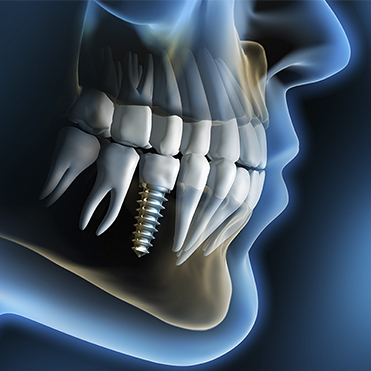Total rehabilitation through implantology

Eating gives energy and if doing it causes pain and discomfort it is clear that dental rehabilitation is necessary. To eat properly we need a varied diet that satisfies our energy needs and a healthy mouth that allows us to correctly perform the primary function: that of chewing. Having a healthy dentition, composed mainly of natural teeth, means having the possibility of chewing correctly but it is important as it also allows for proper nutrition and better digestion.
Tooth loss is first and foremost the loss of your smile.
Our goal is to avoid the use of mobile prostheses, for these 3 reasons:
- Cause of psychological and social inconvenience;
- Impediments to chewing well;
- Bone reduction and gum withdrawal.
Implant rehabilitation represents the most appropriate solution for problems in an area (without teeth) or for situations of complete instability with movable and now definitively unrecoverable teeth.

The implants can:
- replace a single tooth (crown on implant);
- replace a group of close teeth (bridge on implants);
- they can be used to stabilize a total upper or lower prosthesis;
- replace an entire dental arch.
NIn the case of an entire dental arch, we are talking about immediate loading implantology, that is the insertion of the implants and the immediate loading of the fixed prosthesis on the same day.
From a technical point of view, the implant insertion surgery is directly linked to the availability of the residual bone. For the insertion of the implant in osseointegration, the diagnosis of the anatomical structure with the use of sophisticated diagnostic equipment is necessary.
Knowing the height, thickness and bone density helps the dentist in implant treatment.
Clearly, a serious evaluation by the specialist is required, who will have to plan with appropriate tests and tools, detect the coexistence of the factors necessary for the success of the intervention: the success rate of the implant prostheses is certainly very high, between 92 and 98%.
However, it is important to underline how these success rates are the direct consequence of timely planning, the application of precise protocols and a subsequent hygienic maintenance program that includes periodic checks.





